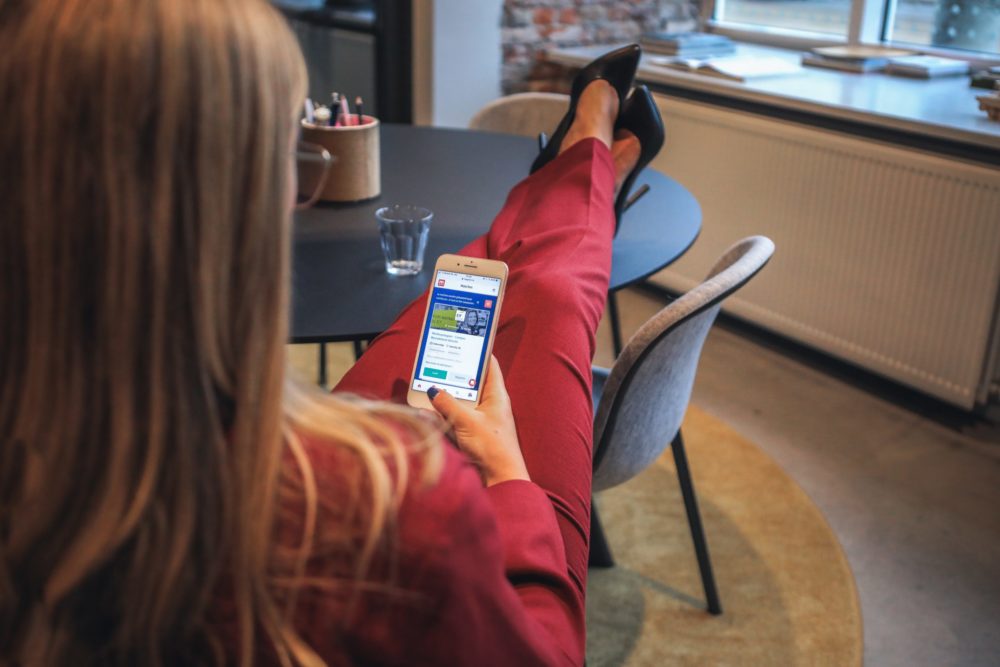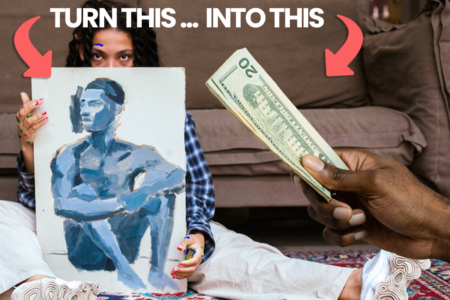The way we make a living is changing. As the gig economy expands, there are opportunities for non-traditional work around every corner, and it is easier than ever to get paid as a freelancer.
In the old days, there were basically two ways to get paid as a contractor: cash or check. These days, while both of those forms of payment are still used, it’s just as common for freelancers to get paid online, through a mobile app or even a direct transfer.
There are pros and cons to each way of payment, but at the end of the day, most freelancers get paid however their client chooses to pay them. Personally, I accept payment at least three different ways, depending on what works best for each organization I contract with.
One of the simplest (and most common) forms of payment for contractors is PayPal, especially if you work with smaller companies. If you don’t already know how to receive money on PayPal, it’s important to familiarize yourself with the platform.
Learning how to receive money on PayPal is pretty straightforward. The app is free to download and setting it up is easy. Clients can send you money through their own account or with a credit or debit card, so it’s really versatile for both you and the brands you work with.
One bonus of learning the ins and outs of how to receive money on PayPal as a freelancer is that you can then use it for other areas of your life. PayPal makes it easy to transfer money to friends or to receive money from passive income apps.
Now that you’re convinced you need PayPal in your life (amiright?), let’s get into how to receive money on PayPal.
How to receive money on PayPal in 5 steps
If you’ve got an email address and a bank account, you can get paid on PayPal. We’ll walk you through the simple steps so that you feel confident in how to receive money on PayPal in no time.
1. Open PayPal account
Signing up for PayPal starts with visiting the website (https://www.paypal.com/) and clicking “Sign Up,” in the top right-hand corner.
From here, you will need to decide what type of account you need.
PayPal has both personal and business account options. Choose a personal account if you’re looking to use PayPal with your friends and family.
A business account has some additional features, such as invoicing, so if you’re looking to get paid as a freelancer, that is the choice for you. There is no additional fees for setting up a business account.
You’ll need to enter your email address, choose a secure password, and then provide some basic information, like your business name and address, so have those ready.
2. Link a bank account to your PayPal
You can keep money right there in your PayPal account, but if you want to know how to receive money on PayPal that you can also use outside of the app, you’ll need to link a bank account.
To do this, simply click on the Wallet tab at the top of your account, then choose “Link a bank” on the left side of the page. There are a variety of banks to choose from right in the menu, but take it from this small-town girl, PayPal supports almost any banking institution.
Just search for your bank using the search bar, and if your bank (or credit union) doesn’t pop up, you can use your routing and account numbers to link up anyway.
3. Send an invoice, request money, or use your personalized link
So you’ve got your account set up and your bank account linked, now you want to know the important part: how to receive money on PayPal.
When you’re ready to get paid, PayPal makes it easy. There are three ways to do it: send an invoice, send a direct request for money, or send your own invoice with your personal PayPal link so clients can easily transfer funds to your account.
If you want to simply request money, click “Send & Request” at the top, then hit “Request.” You will need to know the email address, username or phone number associated with your client’s PayPal account. Make sure you double-check this information, you don’t want to request money from the wrong person!
To send an official PayPal invoice, you’ll also start in the “Send & Request” section, but instead of sending or requesting money, you’ll want to look for the “more” button to the right of “Request” and “Contacts.” This menu has the invoice option.
You may be wondering how to receive money of PayPal if you need to submit a separate invoice through your accounting software or using a company PO. You can still get paid via PayPal—each PayPal account has a unique link that will lead clients straight to your account.
To find it, click on the gear icon at the top, and you should see your account details. Your link is underneath the date you join, and above the “Manage” button. It will be something like: paypal.me/UserName.
4. Get paid, then…
Once you have requested the money, PayPal sends the user an email if you used the request or invoicing option within the app. Your client will see the amount requested and there are directions on how to pay you right within the notification.
If you’ve used your own invoicing system, you’ll need to make sure your client understands that you would like to be paid via PayPal, and how to find you.
In either case, it’s up to you to follow up and make sure you receive the money.

5. Transfer money to your bank account
Here’s the fun part: once your client has paid, you will get a notification that there is money waiting for you in your account—what a great feeling, right?
When you get the email from PayPal, you’ll see instructions on how to accept the money. Once it is accepted, you can transfer the money to your own bank account so that you can use it outside of the PayPal platform.
PayPal typically asks you if you want to transfer the money to your bank right when you accept it, but if you missed that step, you can still withdraw the money.
Simply go to your wallet, click “Transfer Money,” and then “Withdraw.” You get to choose the account to transfer to (if you have more than one bank account linked), and you can also select the amount to transfer. Sometimes it’s easier to get paid by multiple clients and then transfer a lump sum to your bank all at once.
Congratulations! You have just successfully navigated how to receive money on PayPal. Once the initial set up is done, it’s such an easy process, you’ll wonder why you haven’t been using PayPal all along.

How to receive money on PayPal without fees
While PayPal is a free-to-use service, and you can download the app on either iOS or Android for free, PayPal is a business. Like any other business, they make money through their platform, and sometimes there are fees associated with getting paid through PayPal.
If you see these fees pop up in your transactions, you might immediately wonder how to receive money on PayPal without fees. There are ways to get around the fees in some cases, but it’s also important to know that when you’re doing business, transaction fees are to be expected.
The most common PayPal fee that freelancers encounter is a credit card fee. Many business owners use credit cards in order to track expenses, earn rewards, and keep their company expenses separate from their personal accounts. If your client wants to use a credit or debit card, PayPal is an easy way to accept this form of payment, but you can’t get around the fee.
Other common types of fees include international exchange fees for clients outside your home country and for selling official goods and services. These fees are also non-negotiable.
One thing you CAN do is be upfront with your client and let them know that you will have to pass along that fee to them. If they elect to use a credit card or are based outside your country of residence, simply charge a bit more.
It’s common for businesses to charge transaction fees, and most clients will be fine with it. Just don’t tack it on at the end, make sure this fee is negotiated into your contract.
Conclusion
It’s almost impossible to be a successful freelancer without using PayPal, so brush up on how to receive money on PayPal if you’re looking to go into business.
At the end of the day, fees and all, PayPal is a simple, low-cost way of sending and receiving money online. Platforms like PayPal have really made business accessible to individuals.
It’s so easy to transfer money, accept credit card payments and send invoices, something that would not have been within reach for a one-person operation in the past.
Learning how to receive money on PayPal will open up your options for getting paid. It’s free to set up, so there’s no risk, and In the long run, you’ll be glad you tried it out.
Keep the conversation going...
Over 10,000 of us are having daily conversations over in our free Facebook group and we'd love to see you there. Join us!



